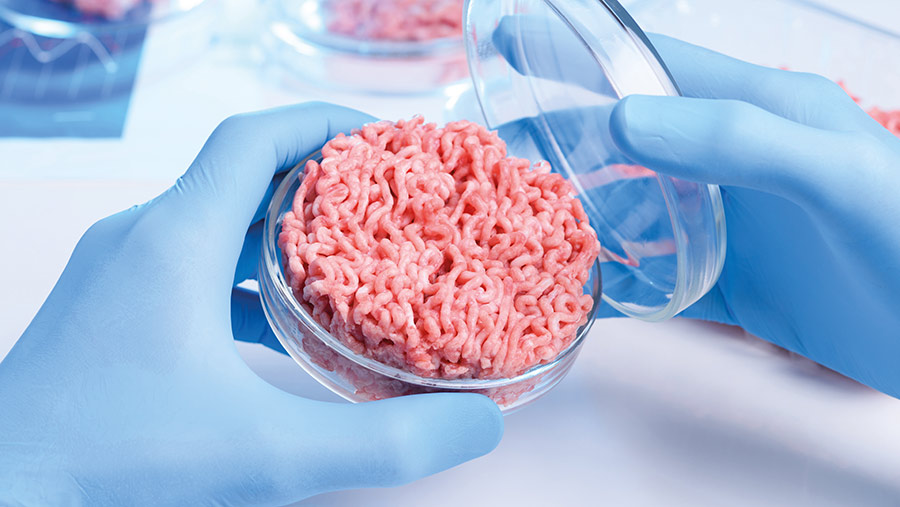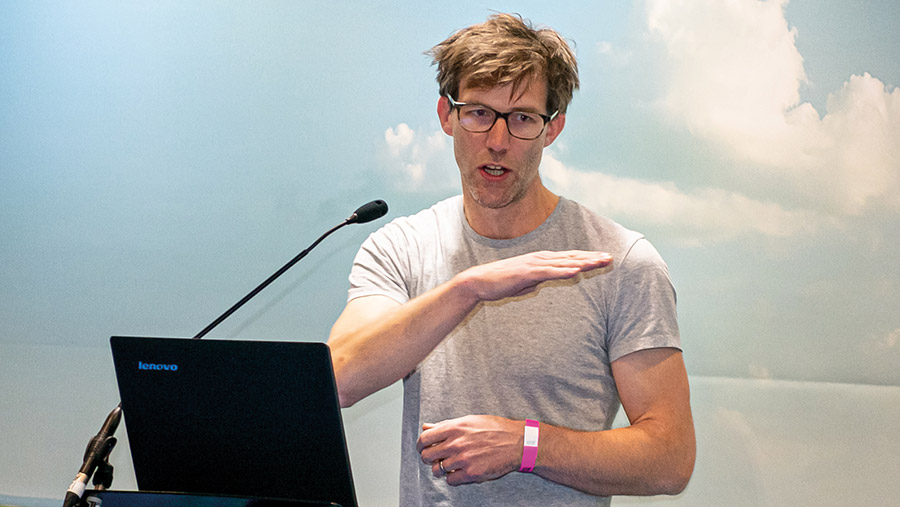Will cultured meat kill off the livestock industry?
 © Cnevodka.com/Adobe Stock
© Cnevodka.com/Adobe Stock Billions of pounds have been ploughed into the development of cultured meat over recent years, with governments, venture capitalists and even climate-conscious celebrities scrambling to cash in.
This rush has seen investment in the UK cultivated meat sector soar by 400% in 2022, and some are already projecting that the global industry could be worth $25bn by 2030, as companies look to new technology to reduce their carbon footprints.
But for many people, meat grown in a laboratory still feels like a sci-fi dream. So what exactly is it?
See also: Lab-grown meat more costly for environment, study finds
Illtud Dunsford, a Welsh livestock farmer and the chief executive of Cellular Agriculture, the first UK start-up in the cultured protein sector, said: “In its most basic form, you take a cell from an animal such as a cow, and instead of feeding that cow forage, you are feeding the cell. That is the difference in terms of the process.
“The cell has originated from an animal and, as you feed it the same nutrients livestock would need, the cell multiplies. That output is still chemically and nutritionally equivalent to meat.
“It is meat – it is just not produced in the same way we traditionally produce meat.”
Adventurous customers
In the UK, industry leaders are looking to enter the market in the next two to three years – but in that timescale, availability of the product is likely to be restricted to high-end restaurants catering to adventurous customers.
That is already the case in Singapore, where small meals containing cultured chicken nuggets and breast are available for the equivalent of around £12-£15.
In England, the Food Standards Agency (FSA) will need to approve a “novel food application” before cultured meat can be sold, with the timescale for approval running at around 18 months. No company has yet submitted such an application to the FSA.
Cultured meat products are not expected to become more commonplace for at least 10-15 years, but there is a determination upon the part of investors to make that a reality.
Way out of livestock farming?
Some of those investors have also made it clear that they see cultured meat as humanity’s way out of livestock farming.
But Mr Dunsford doesn’t believe it is realistic or desirable for cultured meat to replace animal agriculture, because many of its by-products, such as collagen, are still needed by other industries such as pharmaceuticals and cosmetics.
He also points out that cultured meat requires a population of cells from an animal. “You need livestock from that perspective,” he said.
“There are varying options of what that would look like longer term.
“There could potentially be donor herds, not altogether different from the idea of regenerative practice, where you have a lesser number of animals on a piece of land so it can aid in terms of environmental land management.”
Feed cells
All the inputs needed to feed livestock would still be needed to feed cells too, though probably on a lesser scale.
Marianne Ellis, professor of bioprocess and tissue engineering at the University of Bath, explained how this process works.
“You need to feed in what we call a cultured media, which is essentially a nutrient broth which contains sugars, salts and other minerals, vitamins and proteins which the cells grow on,” she said.
“That all happens in what we call a bioprocess, which contains tanks we grow the cells in and controls the temperature, the rate of food supply and the rate of waste removal.
“It takes place in three stages. We take the stem cells, we grow them up in one type of medium so we get as many cells as we can, we then change this slightly to make them into mature muscle cells and the final stage is the maturation, where we have protein laid down.
“The process will take three to four weeks and the amount you get will depend on the population of cells and how big the factory is.”
Farmer scepticism
But many farmers remain sceptical. Evan Roberts, a dairy farmer from North Wales, said: “There’s a bit of concern about how much it will replace the meat we are used to now and how it’ll affect us as farmers and the community.
“In Wales we have got a big farming community and also the Welsh language which relies on that community, so we need to make sure it remains strong.”
What is the likely effect on farming?

Tom MacMillan © Telling Photography
Tom MacMillan, professor of rural policy and strategy at the Royal Agricultural University, Cirencester, is leading a project looking at the effect cultured meat could have on British farming.
As part of the research, his team is looking at whether the product can sit alongside animal agriculture, and in particular, turn some of the waste from abattoirs into the raw materials needed to produce cultured meat.
“It’s early days, but an interesting idea, because obviously a lot of the companies in cultured meat are trying to come up with a production system which does not include animals at all,” he said.
“Thinking about a version of it that does involve animals and makes the most of some of the waste products from current livestock meat processing, from their point of view, will evoke mixed feelings.
“But it’s an interesting possibility that we’ll certainly be looking into. Whether it shows up as a significant opportunity remains to be seen.”
Focus groups
Prof MacMillan’s UK government-funded project, which has been developed with farming organisations, cultured meat businesses, food companies and charities, was put together because no consideration was being given to how farmers would fare in a world where cultured meat was commonplace.
So far, the team has spoken to farmers in six focus groups from a range of sectors, and in the next stage of the research, the potential impact on eight different farms will be modelled.
Besides the concern about dairy cull cows, some more general fears were expressed in the focus groups, including that cultured meat would further accelerate the public’s disconnection with food production.
A worry about the “Americanisation” of the food system, with power consolidated in the hands of a few companies, was also fairly widespread.
Prof MacMillan said: “This is a real risk. As things are, given a lot of this is about private investment coming in from outside the sector and developing proprietary technologies which have high ambitions to take the market share for meat, you’d imagine it would lead to that further consolidation of power.
“But one of the questions for policymakers is: ‘Are there versions of this?’ If there was more public investment in it, that would be better for farming and might lead to more decentralised production.”
Carcass balance
For Prof MacMillan, though, the biggest problem posed by cultured meat is the effect it could have on carcass balance in the short-term.
The first available cultured meat is likely to displace processed products such as sausages, patés, or mince, because the texture is easier to replicate. But this is likely to reduce the market for the fifth quarter.
“There is a potential threat in how it could affect the value available to livestock producers,” said Prof MacMillan.
In dairying specifically, Prof MacMillan’s research found there was real worry about how the value of cull cows could be affected by cultured meat.
What are the opportunities for farmers?
Despite farmers’ concern, a key piece of research being led by Tom MacMillan at the Royal Agriculture University has identified a number of potential opportunities for agriculture from cultured meat – on top of the chance to sell raw materials such as feedstocks and cell lines.
Pasture-fed livestock farmers, in particular, feel that their unique selling point would be strengthened by an “industrial” alternative entering the market.
There is also a hope that some cultured meat production could take place on-farm – as has already happened in the Netherlands.
And perhaps most intriguingly, several of Prof MacMillan’s focus groups said the livestock industry was in need of a “game changer” – both for environmental reasons and because of unsustainable low farmgate returns.
But is cultured meat the gamechanger farming needs? Only time will tell.
